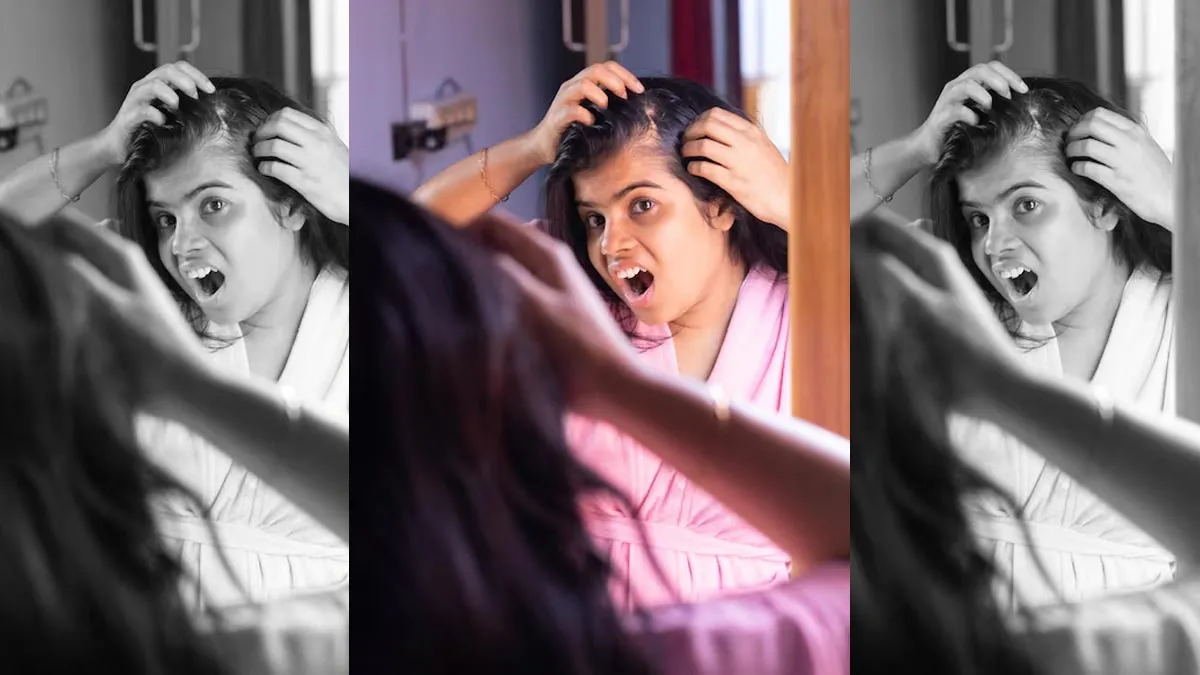
Love monsoons? The season that finally gives us relief and respite from the scorching temperatures. But did you know it also does quite a lot of damage to your hair? You must have noticed that during monsoons, your hairfall increases. This is not without any reason. Dr. Akshay Batra, trichologist and MD at Dr Batra's® Healthcare and ex-president at the Trichology Society of London, states that monsoons bring an increase in hair and scalp issues. He cites a couple of studies to justify his claim, and the findings are startling. Read on to know more.
Dr. Akshay Batra says that the NCBI (National Center for Biotechnology Information) states that while losing 50–100 hair strands per day is typical, during the monsoon, the number could exceed 250. Further, the World Trichology Society conducted a study and reported a 30% increase in hair fall during humid conditions, as moisture alters the hair's structure, making it brittle and weak, which in turn causes seasonal hair breakage.

During monsoons, there’s an increase in humidity, moisture, and sweat, all of which promote bacterial growth, points out Dr. Akshay Batra. “Mostly hair loss, flaking, and itching are considered cosmetic or seasonal issues. They are, however, major indicators of something serious. Such conditions frequently go undiagnosed and untreated, which causes them to worsen and become chronic,” he adds.
As for the causes of the increase in hair fall during monsoon season, Dr Batra says there can be several. Like:
“The whole issue with monsoon is the overlapping nature of these skin disorders, scalp infection, weakened hair roots, and overproduction of sebum,” Dr Batra notes.
Don't Miss: Easy DIY Banana Mask To Take Care of Frizzy Hair In Monsoon
Yes, hair health during monsoons can indicate a much deeper health issue. For example, Alopecia Areata, a type of autoimmune disorder that causes sudden patchy hair loss can become prominent during the rainy season.

Moreover, Folliculitis, an infection of the hair follicles, and chronic dandruff flare-ups can hint at poor scalp hygiene or lack of immunity. Hair shaft fragility or Trichorrhexis Nodosa, is also caused due to external stress and internal nutritional imbalance, that monsoon can easily exacerbate, notes Dr Batra.
So, what can help us in this situation? Homeopathy. It gives a “systematic, evidence-based approach to these issues. It enhances the body's natural ability to cure itself by identifying the underlying reason,” he points out.
“Each prescription is customized both to the presenting symptoms and the individual’s comprehensive physical and emotional state, which ensures continuity in results,” Dr Batra says while adding that Minoxidil, which is often over-applied without medical supervision, isn’t suitable for all types of hair loss. “In some cases, it may worsen shedding, cause scalp irritation, or lead to dependency if the underlying cause remains unaddressed.”
He also highlights that the medical branch of homeopathy is known to provide a permanent solution and not just a "band-aid" fix for the symptoms.
“It rebalances internal systems and strengthens immunity, which reduces the chances of recurrence and the ability to keep a healthy scalp for long. In conjunction with these methods, good hygiene and nutritional support, homeopathy represents an ongoing and non-invasive solution to the world of hair and scalp problems caused by the monsoon,” wraps up Dr. Akshay Batra, trichologist and MD at Dr Batra's® Healthcare and ex-president at the Trichology Society of London.
Don't Miss: Monsoon Hair Care Tips For Healthy Tresses; Expert Weighs In
If you liked the story, please share it. For more such articles, stay tuned to HerZindagi.
Our aim is to provide accurate, safe and expert verified information through our articles and social media handles. The remedies, advice and tips mentioned here are for general information only. Please consult your expert before trying any kind of health, beauty, life hacks or astrology related tips. For any feedback or complaint, contact us at compliant_gro@jagrannewmedia.com.